The Stone of Destiny – Culture Perth & Kinross/Rob McDougall
With over 1000 years of royal history from ancient Kings and Queens to today’s royal family, take a tour through Scotland’s royal history with these fabulous places to visit.
How to discover 1000+ years of Scottish monarchy
When, in AD 848 the Kingdom of the Picts became the Kingdom of Alba it set in motion over 1000 years of monarchy in Scotland.
From Scotland’s first king, Kenneth MacAlpin, King of Dál Riata who unified the the Picts, the Scots, the Angles and the Norse Earls under one king, Scotland’s ancient kings ruled the land for nearly 900 years and shaped the country we see today.
Unlike today’s Royal Family, Scotland’s ancient kings were much more than just pomp and circumstance. They were Scotland’s chieftains in battles with Viking invaders and canny politicians making deals with the Scottish Earls – all the time having to watch their backs for their next in line or competitive neighbour stealing the throne.
The rest as they say, is history – and Scotland has loads of royal history to discover. From folk hero Robert the Bruce and the Great Pretender ‘Bonnie’ Prince Charlie to our modern day Royal Family here is how to take a tour through Scotland’s royal history.
You might also like:
- 40+ ancient ruins, palaces, standing stones and castles in Scotland to visit
- How to discover the Jacobites of Scotland
- A wee bit of gothic Scottish history
- Where to stay in a castle in Scotland
- 10 of the best iron age brochs in Scotland to visit
10 places to visit in Scotland to discover its royal history
- The Stone of Destiny at Perth Museum – the Stone of Destiny, over which Scottish Kings have been crowned has returned home to Scotland 700 years after it was taken by King Edward I of England to Westminster Abbey in London. The stone (pictured above) now takes pride of place in the newly refurbished Perth Museum.
- Balmoral Castle – in the heart of Royal Deeside is the Balmoral Castle. The castle estate and Balmoral cairns are fabulous to explore and guided tours of the private quarters of the royal family at Balmoral Castle will be available to the public this summer for the first time.
- Iona Abbey and Reilig Òdhrain – off the coast of the Isle of Mull is Iona where over 40 Scottish Kings and Queens are buried. Catch the ferry across the Sound of Iona to walk the Sràid nam Marbh – the Street of the Dead along which kings were carried from Martyrs Bay to Reilig Òdhrain, St Oran’s burial ground at Iona Abbey.
- Dunfermline Abbey and Palace – the burial place of Robert the Bruce in 1329, next door the grand Dunfermline Palace was once a royal residence. Dunfermline has recently been made a city and the heritage quarter and pretty Pittencrief Park are a delight.
- The Battle of Bannockburn visitor centre – a turning point of the First War of Scottish Independence, King Robert the Bruce won the Battle of Bannockburn decidedly, changing the face of Scottish history in the process. You can visit the battleground at the fabulous visitor centre just outside Stirling.
- Linlithgow Palace – the birthplace of Mary, Queen of Scots and later the birthplace of her son, James VI of Scotland and James I of England, Linlithgow Palace was originally built in the 15th century by James I of Scotland. Now a beautiful ruin, Linlithgow Palace and Burgh is a great day trip – the town is just 15 minutes on the train from Edinburgh.
- Palace of Holyrood House – the official residence of the British monarch in Scotland, Holyrood Palace at the foot of the Royal Mile offers visitors a glimpse into royal life and has splendid state apartments.
- The Castle of Mey – more a palace than a castle, the Castle of Mey in Caithness was purchased by the Queen Mother in 1952. The castle has lovely gardens and homely rooms – the castle was used by the Queen Mum as her holiday home!
- Glamis Castle – dating back 600 years to the 14th Century, Glamis Castle in Angus was the childhood home of the Queen Mother, it is also the birthplace of Princess Margaret.
- The Royal Yacht Britainia – after serving the Royal Family for 40 years, step on to the Royal Yacht Britannia and you are instantly transported back 50 years to a more sedate time. The Royal Yacht is now one of the top royal attractions in Scotland to visit.
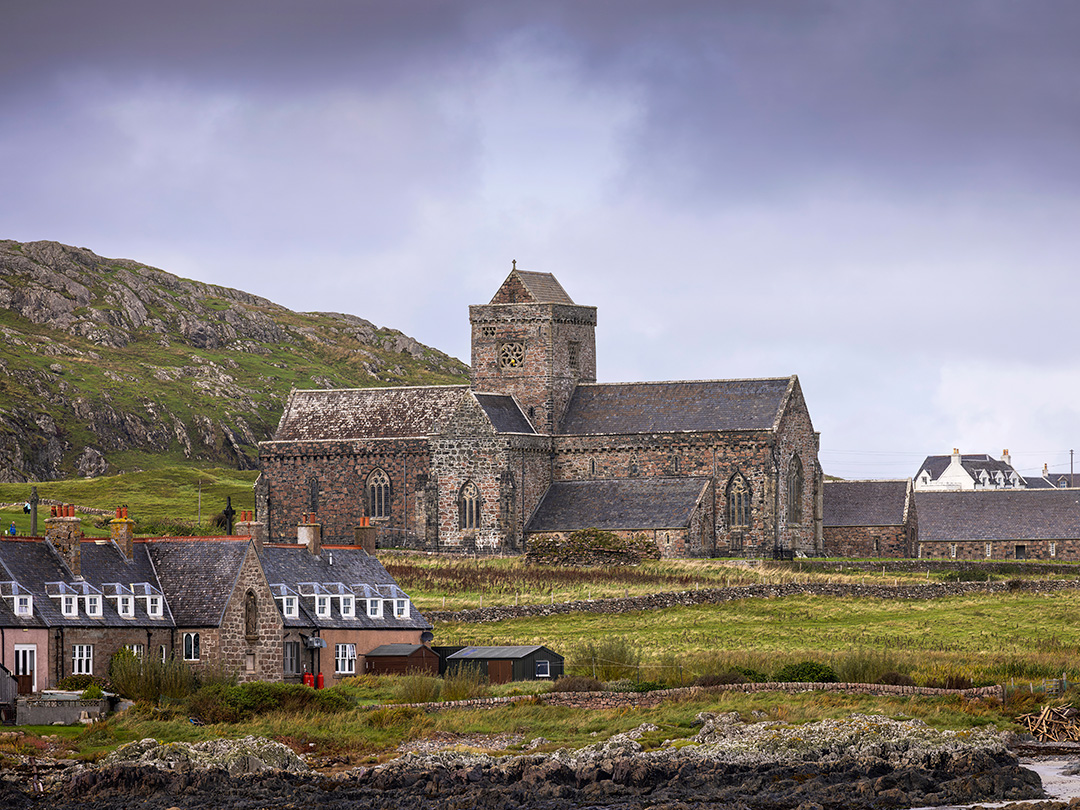
The Isle of Iona
The Isle of Iona, located of the coast of Mull is your first stop on your tour of Scotland’s royal history. The birthplace of Christianity in Scotland, Iona Abbey is the burial place of 48 of Scotland’s kings – including Kenneth MacAlpin and Macbeth, most famous for being the star of the Shakespeare’s Scottish play.
Catch the ferry across the Sound of Iona to walk the Sràid nam Marbh – the Street of the Dead along which kings were carried from Martyrs Bay to Reilig Òdhrain, St Oran’s burial ground.
> read more: how to visit Iona
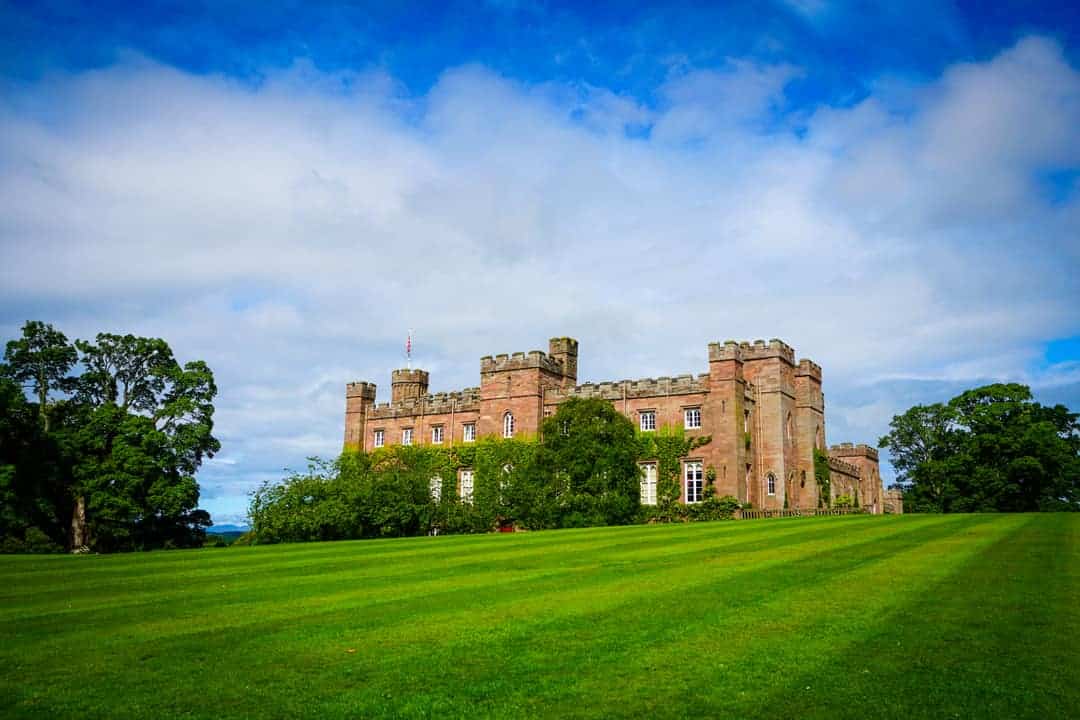
The Stone of Destiny, Perth Museum and Scone Palace
Scone Palace is the coronation site of the Scottish kings who were crowned and inaugurated on the Stone of Scone, also known as the Stone of Destiny.
Robert the Bruce was crowned at Scone Palace in 1306 following the murder of his rival Red Comyn, whom he had killed in the Chapel of Greyfriars Monastery which was located in Dumfries.
The Stone of Scone, a block of red sandstone, is, according to one legend, the biblical Jacob’s Pillow Stone, brought to Scotland by the prophet Jeremiah – all because the 17th-century writer John Speed called the stone saxum Jacobi.
In 1296, the stone was seized by King Edward I of England and taken to Westminster Abbey, where it was placed under the Coronation Chair. It remained there for 700 years until it was returned to Scotland in 1996 and housed in Edinburgh Castle.
The Stone of Destiny now takes pride of place in the newly refurbished Perth Museum – returning home to Scotland 700 years after it was taken by King Edward I of England to Westminster Abbey in London. King Charles III was inaugurated over the stone at his coronation in 2024.
The current palace at Scone was built in the early 19th century and has state rooms, filled with fine art with The Long Gallery featuring a collection of impressive portraits.
> read more: things to do in Perth
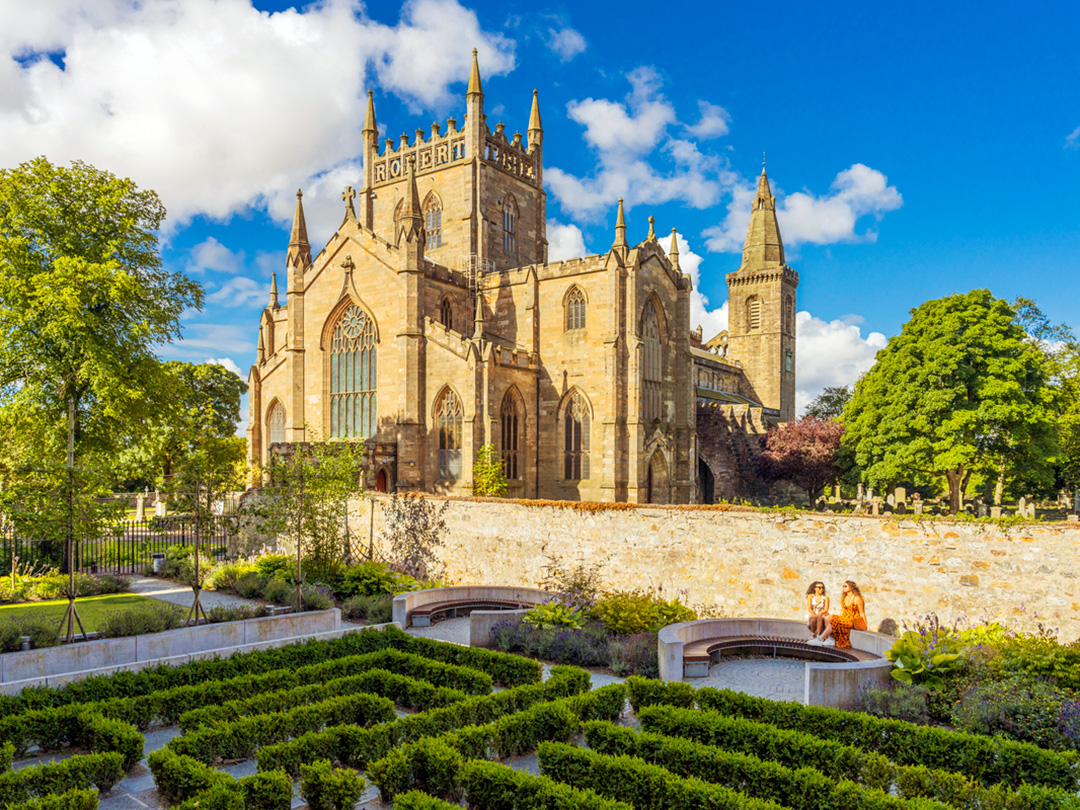
Dunfermline Abbey
Dunfermline’s 12th-century abbey is another burial places of Scottish kings and queens – including Robert the Bruce who was buried here 1329. Elizabeth de Burgh, Robert’s wife was also buried in the Abbey in 1327. Look out for the King Robert the Bruce carved into the Abbey’s tower.
Next door the grand Dunfermline Palace was once a royal residence and birthplace of Kings was originally built in the 11th century and served as a residence for numerous Scottish monarchs, including King Malcolm III and Queen Margaret, who expanded and improved the palace during their reign. Charles I, the last monarch to be born in Scotland lived in Dunfermline Palace.
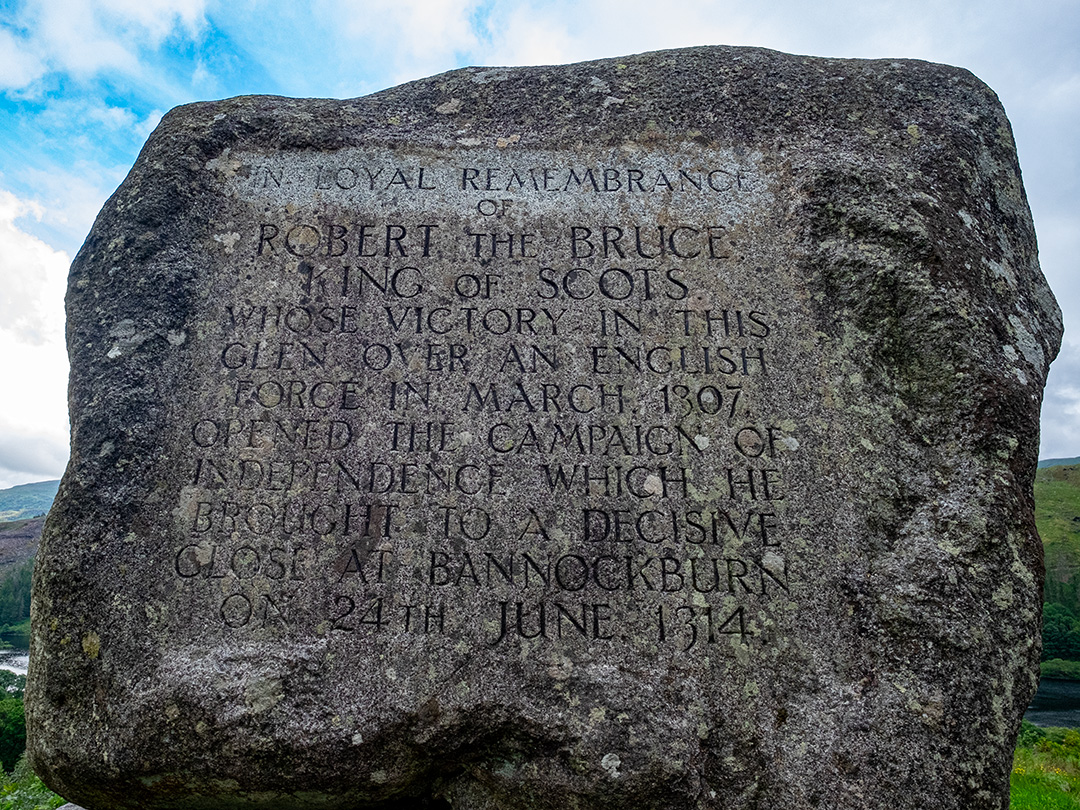
King Robert the Bruce
One of Scotland’s most famous kings and folk heroes, King Robert the Bruce is also one of our most celebrated warriors, leading Scotland in the First War of Scottish Independence against England. The House of Bruce ruled Scotland between 1306 and 1371, with two Scottish Kings – King Robert I and his son David II of Scotland.
- Find Bruce’s Stone at Loch Trool – hidden in the Galloway Forest Park is one of my favourite spots – the hike around beautiful Loch Trool. Have a look for Bruce’s Stone, a memorial commemorating Robert the Bruce’s first victory in 1307 over an English army.
- Learn about King Robert by visiting the Robert the Bruce Heritage Centre in Renton in West Dunbartonshire where there is a ‘Royal Throne’ made from the heart of the Bruce Oak with a replica wooden carving of the Bruce’s Great Seal of Scotland.
- Visit Arbroath Abbey at which signing of the Declaration of Arbroath took place in Arbroath Abbey in 1320 – a letter asserting Scotland’s independence to Pope John XXII – and recognition of Robert the Bruce as king.
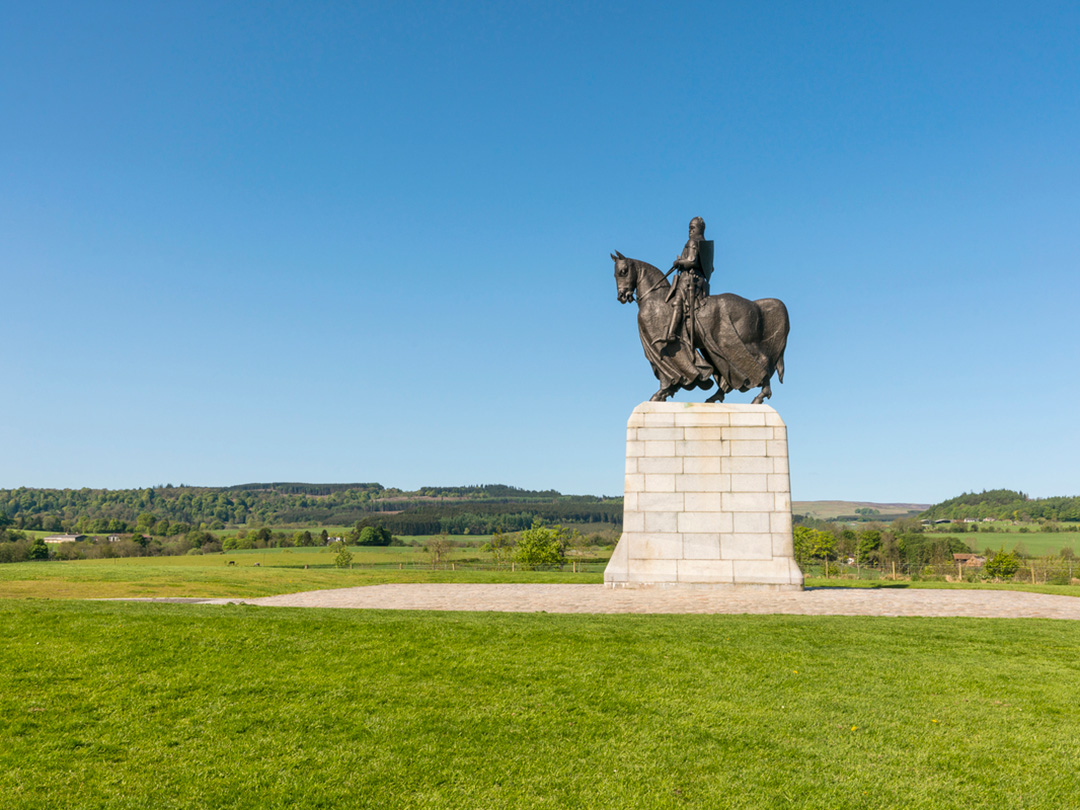
The Battle of Bannockburn
The armies of King Robert I and King Edward II of England was fought at Bannockburn on the 23–24 June 1314. Robert the Bruce won the battle decisively and it was a turning point of the First War of Scottish Independence.
The battle sought to both reinforce Robert’s position of King of Scots and to reclaim Stirling Castle nearby which was occupied by the English. The battle was a rout and led to the capture of many English Earls, which Bruce traded for his wife and daughter who had been imprisoned in England for 8 years.
> Visit the Battle of Bannockburn visitor centre to find out more about this turning point in Scottish History.
The House of Stewart/Stuart and the Bonnie Prince
The Jacobites attempts to bring back a Stuart king back to Scotland’s throne is one of the most famous and bloody eras in Scottish history. Now made even more famous by the TV series Outlander, no visit to Scotland should be without a dip into Jacobite history.
King Charles is actually the third (or 4th?) King Charles we’ve had in Scotland. The first King Charles – Charles Stewart – was beheaded for high treason for losing to the roundheads in the English Civil War. His son became the second King Charles on Charles 1 death. The third King Charles? Well that could have been the Great Pretender – Bonnie Prince Charlie, Charles Edward Stewart who was claimant to the throne and led the Jacobite uprisings.
> read more: how to discover the Jacobites of Scotland
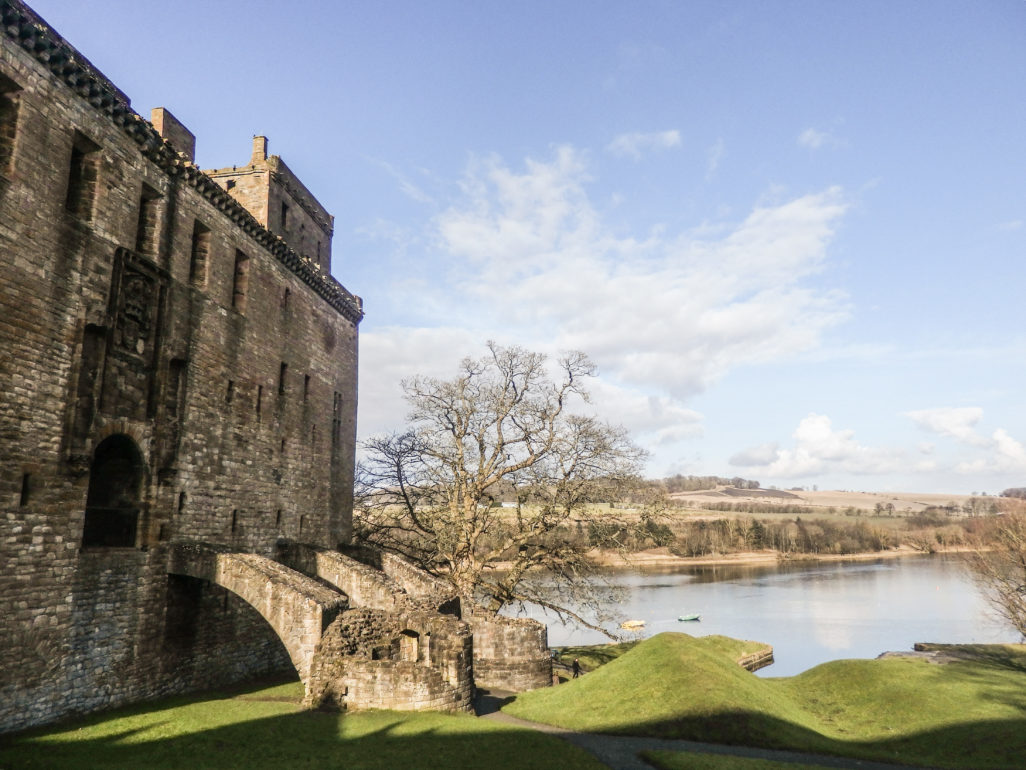
Mary Queen of Scots
Queen of Scotland between 1542–1567, Mary was the only child of King James V of Scotland and became queen 6 days before her birth at Linlithgow Palace. After growing up in France, Mary returned to Scotland to properly take up the role of Queen in August 1561 but faced many difficulties – religion, politics, backstabbing nobles and lack of support from Elizabeth I – and some very poor marriage decisions and ill advised liaisons which eventually led to her downfall.
The modern Royal Family
The modern Royal Family is Scottish! Ok, well they are by heritage. King Charles III is directly descended via King George VI to James VI of Scotland and Queen Elizabeth III’s mother Elizabeth Bowes-Lyons was the daughter of the Scottish Earl of Strathmore, whose ancestral home is Glamis Castle. The Royal families connection to Scotland was strengthened further by the purchase of Balmoral in 1852 by Prince Albert the husband of Queen Victoria.
Palace of Holyrood House
Holyrood Palace, is the official residence of the British monarch in Scotland, offers visitors a glimpse into royal life and the splendid State Apartments. Outside in the grounds, visit the ruins of Holyrood Abbey. Visit Holyrood Palace.
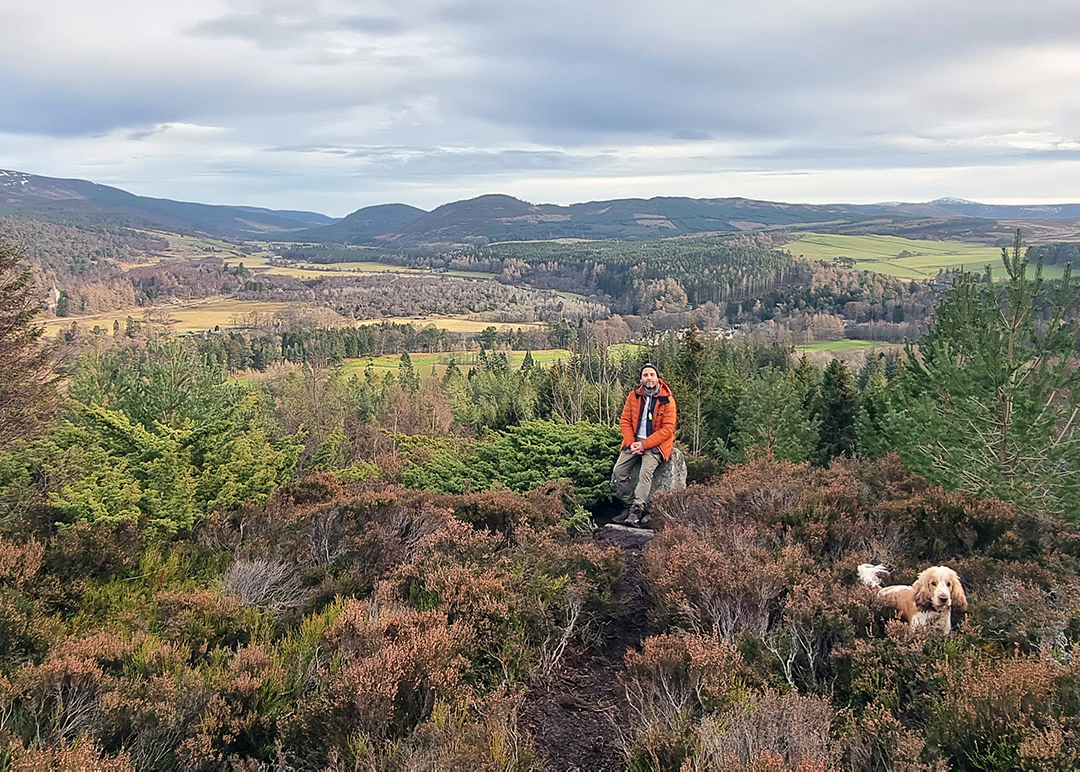
Balmoral Castle and Estate
The Scottish residence of the British royal family in the Cairngorms National Park, Balmoral Castle‘s history dates back to the early 19th century when it was purchased by Prince Albert, husband of Queen Victoria, as a retreat for the royal family. The original castle on the estate was replaced with a new castle in the Scottish Baronial style, completed in 1856.
Guided tours of Balmoral Castle will be available to the public this summer for the first time, and you can sxplore the estate to find the Balmoral Cairns, historical memorials to the Royal Family including a huge stone pyramid for Prince Albert.
> read more: how to visit Royal Deeside
The Queen Mum – The Castle of Mey and Glamis Castle
Dating back 600 years to the 14th Century, Glamis Castle in Angus was the childhood home of the Queen Mother, it is also the birthplace of Princess Margaret.
More a palace than a castle, the Castle of Mey in Caithness was purchased by the Queen Mother in 1952. The castle has lovely gardens and homely rooms – the castle was used by the Queen Mum as her holiday home!
The Royal Yacht Britainia
The Royal Yacht Britannia has been berthed in Leith Docks since 1998 when she was decommissioned after serving the Royal Family for 40 years. Step on to Britannia and you are instantly transported back 50 years to a more sedate time.
You might also like:
- 40+ ancient ruins, palaces and castles in Scotland to visit
- How to discover the Jacobites of Scotland
- A wee bit of gothic Scottish history
- Where to stay in a castle in Scotland
Love from Scotland x
